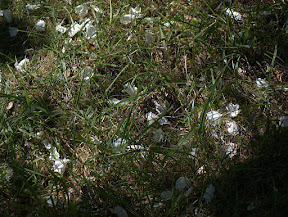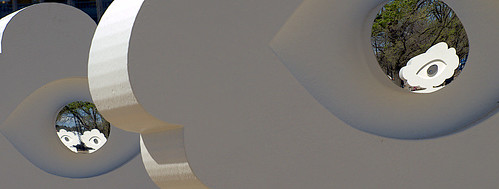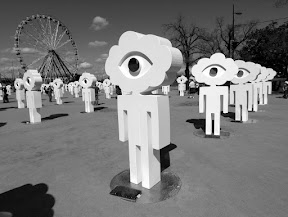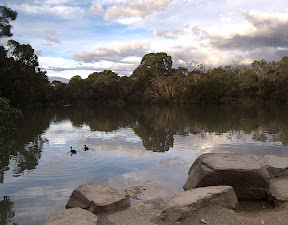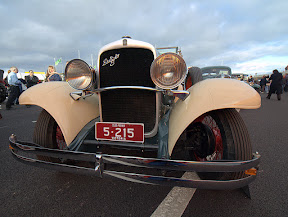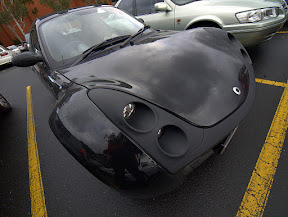We have digital imaging. People often talk about JPEGs being 8bit and ask whether a 14bit RAW is better than a 12bit RAW. Or whether sRGB vs Adobe RGB compares with 24bit colour rendering.
Essentially though, digital capture, storage and rendering hasn't anything to do with the how light and colour looks - they overlap in the fact that one mechanism leads to another but they are different facets to the image.
sRGB - is a definition of colour space. Colour Spaces are all about the light, colour and measuring this.
8 bit - Bits are a computer concept to describe counting and numbers used in binary computers.
The two concepts, sRGB and number of Bits describe different things.
There are several display technologies - LCD panels, Plasma Panels and CRTs.
LCD Panel Types
In terms of LCD panels, the electronics and the panels vary. There are
TN panels, S-IPS panels, VA panels. Xbit details
LCD Monitor Parameters and Characteristics. Anandtech lists
some selection criteria.
From Anandtech:
"Almost all LCDs today are 6-bit or 8-bit LCDs. This means that each subpixel - Red, Green, and Blue - can display one of 2 to the n shades where n represents the number of pixels. A typical 8-bit LCD can produce 256 shades per pixel, or 16.7M color combinations. A 6-bit LCD panel can display 64 shades per subpixel, and since there are three subpixels per pixel, the monitor can display 262,000 color combinations per pixel"
From wikipedia:
"For colour representation many panels use 6 bits per colour, instead of 8, and are consequently unable to display the full 24-bit truecolor (16.7 million colour shades) available from modern graphics cards. These panels can display interpolated 24-bit color using a dithering method which combines adjacent pixels to simulate the desired shade. They can also use FRC (Frame Rate Control), which quickly cycles pixels over time to simulate a given shade. These color simulation methods are noticeable to most people and bothersome to some[citation needed]. FRC tends to be most noticeable in darker tones, while dithering appears to make the individual pixels of the LCD visible. Overall, color reproduction and linearity on TN panels is poor."
How do you find out what type the LCD panel you are interested in is? Try TFTCentral and Flatpanels.dk A concise list and summary of features is at Hardforum.
Gamut of backlights
In addition to the different panel substrate technologies, these panels
have to be lit - thus they can choose to use different bulbs (lights).
From wikipedia:
"Shortcomings in display color gamut (often referred to as a percentage of the NTSC 1953 color gamut) are also due to backlighting technology. It is not uncommon for displays with CCFL (Cold Cathode Fluorescent Lamps)-based lighting to range from 40% to 76% of the NTSC color gamut, whereas displays utilizing white LED backlights may extend past 100% of the NTSC color gamut – a difference quite perceivable by the human eye."

